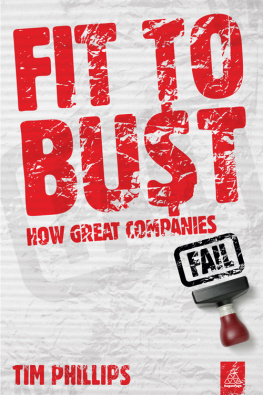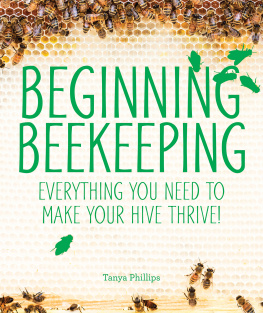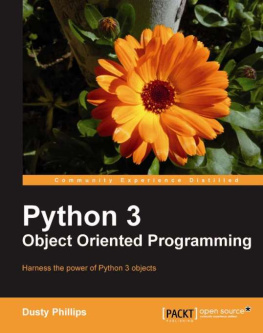Note on the Ebook Edition For an optimal reading experience, please view large
tables and figures in landscape mode. |
This ebook published in 2011 by
Kogan Page Limited
120 Pentonville Road
London N1 9JN
UK
www.koganpage.com
Tim Phillips, 2011
E-ISBN 9780749460143
Contents
I was planning to write this book a couple of years ago, but then companies kept failing. I suppose I should be grateful.
Thank you Alyssa Danigelis and Professor Bonnie Fox Garrity for doing valuable research that I would have missed. Also Professor Patricia Hutton of Canisius College in Buffalo, NY. Apparently if youre planning a book and you mention it to her in conversation, she can organize a seminar on the subject where other people will give you lots of good ideas that you never would have thought of yourself. Thats my experience, anyway.
My agent Rob Dudley and my editor Jon Finch were extraordinarily polite about trifling things like missed deadlines.
Finally my wife Nazaret. Good news Naza: at the end of this sentence, Ive finished.
B y any standards, 2009 was a difficult year for large companies. Of the Fortune 500 list, 128 of the companies made a loss in 2009. That compares with 66 in 2004 and 67 in 1999. Finding big companies to go bust is an entertaining reverse stock-picking game, but not as tough as it has been in recent history.
In April 2009, the website 24/7 Wall St. published a list of 10 brands that would disappear or be acquired by the end of 2010. The carnage was so swift that, in December 2009, it published another list. And, in June 2010, a third list.
In each list, more than half of the predictions came true. Many of the companies that limped through survived through desperate and savage cost-cutting. Brands that had been widely admired a few years previously GM or Sun Microsystems for example had failed to survive independently.
There will always be business failures without the possibility of failure, there isnt the possibility that exciting or innovative new companies will become successful. Analysts and the business press exist because we need to track the trajectory of these meteors. Financial services backs the winners and withdraws support from the losers.
But when we look at who fails, when, and how, its often shocking how far and how fast great companies can fall. After the event we can spot the problems, but a common theme in this book is the adulation that many failures bask in, right until the last moment. Afterwards we credit the small group of contrarians who were the first to spot a major failure, and rightly so. Yet in the four centuries that this book covers, we havent become appreciably better at resisting bubbles, spotting charlatans or maintaining momentum.
One of the most important business books of the past 20 years was Built to Last , by Jim Collins and Jerry Porras. The authors asked 65 large company CEOs which companies they considered to be the most visionary, and why. As a result, they compiled a list of 18 companies that not only dominated their markets, but which would do so in a consistent, long-lasting way.
Published in 2004, the book inspired thousands of leaders. Its a terrific read. But as the magazine Fast Company pointed out on the tenth anniversary of its publication by which time the book had sold 3.5 million copies and been translated into 16 languages its ability to inspire was better than its ability to predict which companies were built to last: The fact remains that at least 7 of BTLs original 18 companies have stumbled scarcely better than the results youd get by flipping a coin.
The tenth anniversary article interviewed the authors, and other academics, on how effectively we can say that any organization is built to last in the long term. For the most part, my experience has been that people havent gotten hung up on the list of companies. At least intelligent, practicing leaders havent gotten hung up on it, Collins says. In 2009, he published a further book based on long-term research on how companies that are built to last forget their values.
There is, however, the argument that Collins and Porras produced a wonderful and insightful book on how some managers and some companies can improve their performance, which has inspired a generation of high-achieving managers to do mostly positive things for themselves, their department, their branch office or occasionally their company (when you sell millions of copies, they dont all get bought by the CEO). And yet, when you copy the habits of the successful companies in the book, you are no more built to last than they are. There are bigger forces at work here.
When a British prime minister was asked by a journalist what factors were most likely to blow a company off course, he answered: Events, dear boy, events.
Asking what causes all companies to fail is a bit like asking what is the best colour to paint a work of art so that it will sell. Theres plenty of historical data, and Im sure that we can make a correlation between colours and auction prices, especially if we select a small group of paintings, and look for what they have in common.
What really makes great companies succeed or fail? Events, internal and external.
Collins and Porras know this very well: Collins says that the most important part of the book is chapter four: Preserve the core! And! Stimulate progress! To be built to last, you have to be built for change! Ceaseless innovation has been at the heart of what made some companies great: Google, Dyson or Apple, for example. As we will see, it has also made some companies into a mess.
Richard DAveni, professor of strategic management at Dartmouths Tuck School of Business, is one of the critics of business books in general. They give a set of instructions that make people feel terrific about themselves, he says, but it creates activity rather than results:
One, tell people what they want to hear and give them hope. Two, make it a Rorschach test [ a test designed to show intelligence, personality and mental state, in which the subject interprets ink-blots , and three, keep it so simple that it really doesnt examine the truth of the world in enough depth so people get a false sense of clarity.
Maybe that activity is the point an energetic group, whatever its method, is more likely to correct faults. But, as we will also see, it has created a cult of management, where we pursue destructive strategies until they drive the business into the ground because they must be correct, or where we blindly follow a charismatic leader to destruction, because the leader has told us its the best thing to do.
The stuff that happens might be a global financial crisis; if it werent for a very particular set of events, then Lehman Brothers or AIG would have continued on their path, at least in the short term, creating extraordinary profits for a little longer. It might be a simple exhaustion of the market available the most extreme examples of which cause Ponzi schemes inevitably to fail, and pyramid marketing to run out of steam.
It might be a single, disastrous decision that undermines years of hard work. It might be overreach, an attempt to change the world in a way that the world doesnt want to be changed, or an attempt to expand that takes two great companies and produces a single mediocre one.
We have a problem: the same superficial features of success are also the telltales of failure. It suggests that its not what you do, but how you do it, that counts.



















